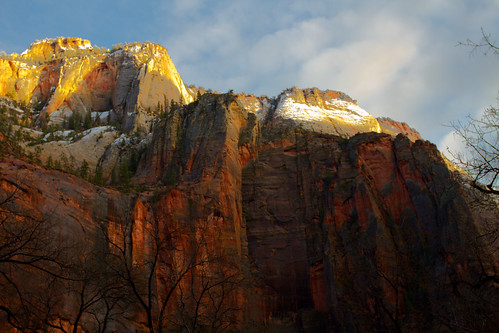With four-fifths of its population living in a narrow band along the basin of the Wasatch Mountains, to the east and south of the Great Salt Lake, Utah’s unique geography makes it a playground for lovers of the outdoors.
Outside of the so-called Wasatch Front urban area, Utah contains vast swathes of protected natural areas, including many world-class national parks. The lands between these parks sport some pretty amazing scenery too, so consider hitting them on a single driving tour.

Zion National Park
Known for its stunning multi-colored rock formations, a deep main canyon and numerous glorified crevices known as slot canyons, Zion National Park attracts serious outdoor adventurers and on-the-beaten-path families alike.
The National Park Service permits cycling and horseback riding in the park, although many visitors choose an eight-hour day-hiking route through the canyon’s “Narrows” section. Since flash floods can happen without warning at any time of year here, forays into wilderness sections of the canyon require a special permit.
Bryce Canyon National Park
Characterized by spectacular red-rock scenery and mind-bending rock formations, Bryce Canyon is one of Utah’s most-photographed places. Of particular note are its tall, rounded spires called “hoodoos,” multiple rock windows and arches, and elevated projections called “fins.”
Most visitors stick to the main section of the canyon, called the Bryce Amphitheater, but the park has an impressive network of back-country trails for adventurous overnight hikers as well.
Arches National Park
In a state that’s known for its geology, Arches National Park is the undisputed king of outrageous rock formations. There are some 2,000 individual examples of its namesake feature in the park, a stunning tribute to the power of water and wind erosion that’s unmatched anywhere else in the world. To catch the deep red hue of most of the park’s bedrock in its most expressive state, visit the park at sunrise or sunset.
Canyonlands National Park
Like better-known Grand Canyon National Park further down the waterway’s course, Canyonlands National Park owes its existence to the awesome power of the Colorado River. Along with the mighty Green River, a principal tributary, the Colorado has spent millions of years carving a tortured path through the pliable rocks under southern Utah.
The paved road along the Island in the Sky mesa is the easiest, quickest way to see Canyonlands, but the seasonal explosions of raftable whitewater rapids along of its major rivers may be its defining physical characteristic.
Capitol Reef National Park
Characterized by a strange uplift formation known as the Waterpocket Fold and a “living crust” of soil comprised of desert mosses and cyanobacteria, the landscape of Capitol Reef National Park is bizarre, even otherworldly.
The Waterpocket Fold, the park’s defining geological characteristic, snakes its way through nearly 100 miles of otherwise flat desert land. This may be one of Utah’s most biologically diverse places: The Fold is home to nearly 900 unique plant and animal species.
This article was contributed by John Reynolds on behalf of Paydaycashadvanceloans.biz. They provide a convenient place online for individuals to connect with cash advance and payday loan lenders.
